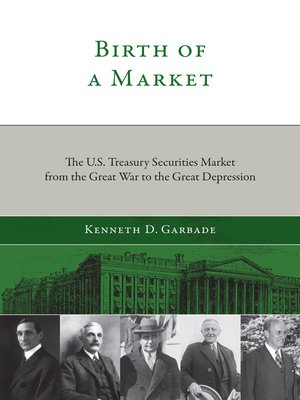Birth of a Market
ebook ∣ The U.S. Treasury Securities Market from the Great War to the Great Depression · MIT Press
By Kenneth D. Garbade

Sign up to save your library
With an OverDrive account, you can save your favorite libraries for at-a-glance information about availability. Find out more about OverDrive accounts.
Find this title in Libby, the library reading app by OverDrive.



Search for a digital library with this title
Title found at these libraries:
| Library Name | Distance |
|---|---|
| Loading... |
The evolution of "a marvel of modern finance," the market for U.S. Treasury securities, from 1917 to 1939.
The market for U.S. Treasury securities is a marvel of modern finance. In 2009 the Treasury auctioned $8.2 trillion of new securities, ranging from 4-day bills to 30-year bonds, in 283 offerings on 171 different days. By contrast, in the decade before World War I, there was only about $1 billion of interest-bearing Treasury debt outstanding, spread out over just six issues. New offerings were rare, and the debt was narrowly held, most of it owned by national banks. In Birth of a Market, Kenneth Garbade traces the development of the Treasury market from a financial backwater in the years before World War I to a multibillion dollar market on the eve of World War II.
Garbade focuses on Treasury debt management policies, describing the origins of several pillars of modern Treasury practice, including "regular and predictable" auction offerings and the integration of debt and cash management. He recounts the actions of Secretaries of the Treasury, from William McAdoo in the Wilson administration to Henry Morgenthau in the Roosevelt administration, and their responses to economic conditions. Garbade's account covers the Treasury market in the two decades before World War I, how the Treasury financed the Great War, how it managed the postwar refinancing and paydowns, and how it financed the chronic deficits of the Great Depression. He concludes with an examination of aspects of modern Treasury debt management that grew out of developments from 1917 to 1939.







